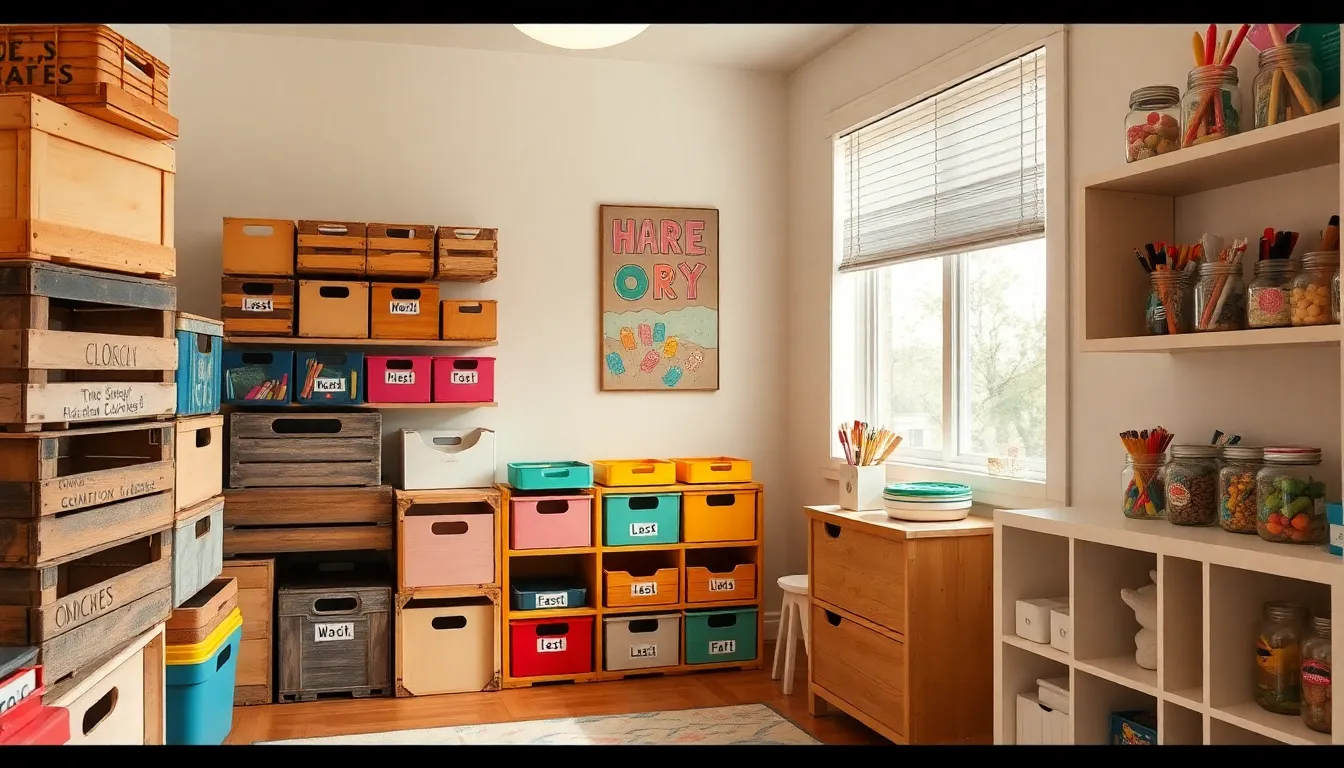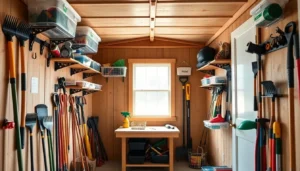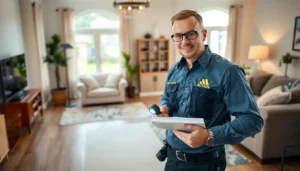Table of Contents
ToggleToys are like little gremlins—they multiply when you’re not looking and can turn any room into a chaotic playground. If you’ve ever stepped on a rogue LEGO piece in the middle of the night, you know the struggle is real. But fear not! With a dash of creativity and a sprinkle of organization, transforming that toy tornado into a haven of harmony is easier than you think.
Creative Toy Organizing Ideas
Organizing toys creatively reduces clutter and enhances playtime efficiency. Here are a few effective strategies to manage toys.
Categorizing Toys by Type
Grouping toys by type simplifies the organization. Place action figures together, sort building blocks in one area, and keep puzzles in a separate location. This method not only assists children in finding their favorites quickly but also encourages them to return toys to their designated spots. Functional labeling makes it even easier; use pictures or words to identify each category. Consider involving kids in the sorting process, turning it into an engaging activity that fosters a sense of responsibility.
Utilizing Bins and Buckets
Leverage bins and buckets for an organized solution. Opt for clear containers to allow visibility of toy contents, enabling quick identification. Use color-coded bins to match different toy types, making it visually appealing for children. Stackable options save space, maximizing the use of vertical areas. Position bins at a height accessible to kids, promoting independence when selecting or returning toys. Additionally, label each bin clearly, ensuring even the youngest can understand where each toy belongs.
DIY Toy Organization Solutions

Creative toy organization enhances playtime and reduces clutter. Implementing simple solutions can transform spaces into organized, functional areas.
Upcycling Household Items
Repurposing household items can offer innovative storage solutions. Empty cereal boxes serve as dividers in drawers, while shoeboxes create personalized storage for small toys. Ice cream tubs may become containers for larger items, making them accessible. Additionally, using mason jars for art supplies or small game pieces maximizes space and keeps everything visible. Repurposed furniture, like an old dresser, can provide ample storage by adding baskets to each drawer. Applying these ideas not only saves money but also encourages eco-friendly practices in daily living.
Crafting Custom Storage Systems
Building custom storage systems fosters personalized organization. Wooden crates can stack creatively, perfect for keeping toys off the floor. Constructing a pegboard wall offers flexible storage, allowing hooks for frequently used items. Families can also create themed bins with paint or decals, aligning storage with children’s interests. Utilizing fabric storage cubes enhances flexibility since they can fit into various spaces seamlessly. Assembling open shelves promotes easy access to toys, ensuring kids actively participate in playtime. Following these tips empowers families to design their ideal toy organization solutions.
Benefits of Organized Toys
An organized toy space fosters a positive environment for play and learning. Clutter-free areas contribute significantly to children’s focus and creativity.
Encouraging Play and Creativity
Encouraging play and creativity thrives in organized settings. Children can explore activities and ideas when toys are easily accessible. With fewer distractions, they fully engage in their playtime. Organized toys facilitate quicker transitions between activities, allowing children to delve deeper into their imaginative play. The act of returning toys to specific spots reinforces responsibility and care for belongings, nurturing their sense of ownership. Further, when kids can see their options clearly, it sparks curiosity and fosters innovative thinking.
Reducing Clutter in Your Home
Reducing clutter in your home enhances not just aesthetics but overall well-being. Organized toys eliminate the chaotic environment that often leads to frustration and stress. Strategically labeled bins and accessible storage simplify clean-up, turning what once felt overwhelming into manageable tasks. Having designated places for each toy prevents the accumulation of unused items, promoting mindful consumption. Families enjoy enhanced safety as organized spaces significantly lower the risk of accidents caused by scattered toys. Ultimately, streamlined organization leads to a more serene and functional living space.
Tips for Maintaining an Organized Play Area
Establishing routines keeps the play area tidy. Set specific times for clean-up, encouraging children to participate. Engaging kids in the process teaches them responsibility while making it fun.
Utilize storage solutions that promote easy access. Open bins and low shelves allow children to reach toys independently. Consider color-coding for quick identification, which aids in returning items to their rightful places.
Encourage regular decluttering sessions. Monthly assessments help identify toys no longer used, supporting a more manageable collection. Donations to local charities or friends foster sharing and generosity.
Incorporate creative labeling strategies. Use a combination of pictures and words to create clear labels. Visual aids assist younger children in recognizing where toys belong, reinforcing organization skills.
Implement thematic storage ideas. Organizing toys by categories such as cars, dolls, or art supplies simplifies playtime. This system promotes focused play while minimizing distractions.
Explore mobile storage options. Rolling carts enable easy relocation of toys, providing flexibility in play areas. Moving items closer to where activity occurs ensures that everything stays in place.
Maintain an ongoing dialogue about organization with children. Discussing the importance of cleanliness fosters positive habits. Highlighting the benefits of a tidy play area makes the practice appealing.
Schedule time to rearrange or modify the space as needed. Children’s interests change, requiring adjustments in toy organization. Adapting storage solutions to reflect their evolving preferences keeps the area both functional and engaging.
Transforming a chaotic toy area into an organized haven is entirely achievable with the right strategies. By categorizing toys and using functional labeling, families can foster independence in children while creating a visually appealing space. Embracing DIY solutions and upcycling household items not only enhances organization but also adds a personal touch to storage systems.
Maintaining an organized play area is an ongoing journey that encourages responsibility and creativity in children. Regular clean-up routines and open conversations about organization can keep the space functional and engaging. Ultimately, an organized environment not only reduces clutter but also nurtures a positive atmosphere for play and learning, making it a win-win for everyone involved.




